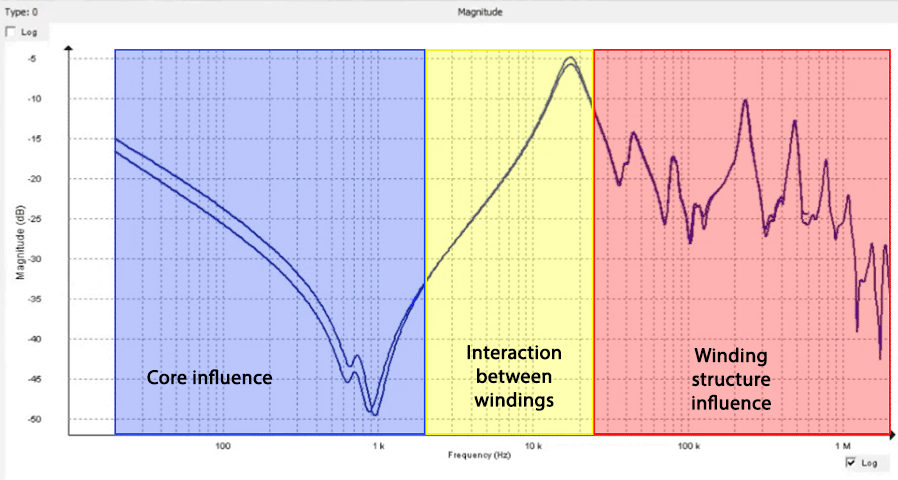Sweep Frequency Response Analysis (SFRA) is a diagnostic technique used to assess the mechanical and electrical integrity of transformers. By applying a range of frequencies to the transformer windings and measuring the resulting response, SFRA can detect anomalies such as winding displacements, core movements, or insulation issues.
The frequency response is typically divided into low, mid, and high ranges, each sensitive to different types of issues.
Low Frequency (up to a few kHz)
Sensitive to core and major winding issues, such as core movement, loose laminations, or shorted turns. These problems alter the low-frequency response, making this range ideal for detecting large-scale mechanical failures.
Mid Frequency (tens of kHz)
Sensitive to interactions between windings. Mechanical displacements or changes in coupling between primary and secondary windings primarily affect the mid-frequency response. This range helps identify winding interaction issues without being influenced by core anomalies or fine structural details.
High Frequency (hundreds of kHz to MHz)
Sensitive to the fine structure of the windings, including turn-to-turn arrangement, insulation integrity, and conductor spacing. High frequencies reveal detailed winding or insulation defects that may not be visible in low or mid-frequency ranges.
Ultra-High Frequency (>1 MHz)
In the ultrahigh-frequency range, SFRA measurements are dominated by parasitic capacitances and inductances within the transformer and its connections. At these frequencies, the test setup—including lead length, shielding, and grounding—can significantly affect the measured response.
While true winding or insulation defects may still appear, care must be taken to distinguish real anomalies from measurement artifacts caused by external influences. This range is therefore useful for identifying subtle winding or insulation issues, but only when interpreted alongside controlled and consistent test conditions.
In Summary
-
Peaks, dips, or shifts in the low-frequency range indicate potential core or major winding issues.
-
Changes in the mid-frequency range suggest mechanical coupling problems or winding displacement.
-
Variations in the high-frequency range point to detailed structural or insulation issues within the windings.

